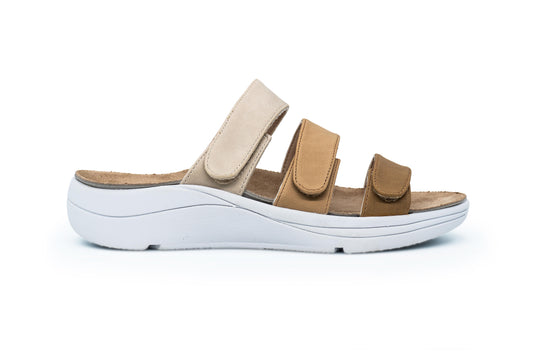Signs It's Time to Replace Your Orthopedic Shoes: A Guide for Diabetic Foot Health
If you’ve been diagnosed with diabetes, proper foot care becomes paramount to prevent complications such as ulcers and injuries. Orthopedic shoes play a crucial role in foot health for individuals with diabetes, providing support and protection. However, like any footwear, orthopedic shoes require replacement over time to maintain their efficacy and ensure optimal foot health. In this guide, we explore the signs indicating it's time to replace your orthopedic shoes and discuss the importance of timely footwear replacement for individuals with diabetes.
Importance of Replacing Damaged or Old Orthopedic Shoes:
Damaged orthopedic shoes compromise foot protection and increase the risk of injuries and ulcers, particularly for individuals with diabetes. Worn-out shoes lack adequate support and cushioning, leading to discomfort and potential foot-related complications. Regular replacement of orthopedic shoes is essential to maintain foot health and prevent adverse outcomes associated with diabetic foot conditions.
How Often Should You Replace Orthopedic Shoes?
The frequency of orthopedic shoe replacement varies depending on individual factors and shoe condition. As a general guideline, orthopedic shoes should be replaced every 1 to 3 years. Regular podiatrist visits every 6 months help monitor shoe condition and determine the need for replacement based on wear patterns, support, and overall condition.
Signs It's Time to Get a New Pair:
- Wear and Tear:
- Excessive scuffing, scratches, and visible signs of wear indicate diminished shoe integrity and reduced protection. Check the sole traction for decreased grip, which compromises stability and support.
- Foot Pain:
- Persistent foot pain, plantar fasciitis, or worsening neuropathy symptoms suggest inadequate arch support or cushioning. Addressing foot discomfort promptly is essential to prevent further complications.
- Tread Pattern:
- Smooth tread patterns indicate worn-out shoes with reduced shock absorption and support. Replace shoes with worn treads to maintain proper foot mechanics and minimize pressure on vulnerable areas.
- Size and Fit:
- Changes in shoe fit, including tightness or discomfort, signal potential foot swelling or altered foot dimensions. Ill-fitting shoes increase the risk of friction injuries and require replacement for optimal comfort and support.
- Twist Test:
- Conduct a simple twist test by flexing the shoe to assess its stiffness and structural integrity. Supportive shoes should offer resistance to twisting, indicating adequate support and stability.
Regularly evaluating shoe condition and addressing signs of wear or discomfort helps individuals with diabetes maintain optimal foot health and prevent complications. Consult with a podiatrist for personalized recommendations on footwear selection and replacement intervals based on individual foot care needs.








